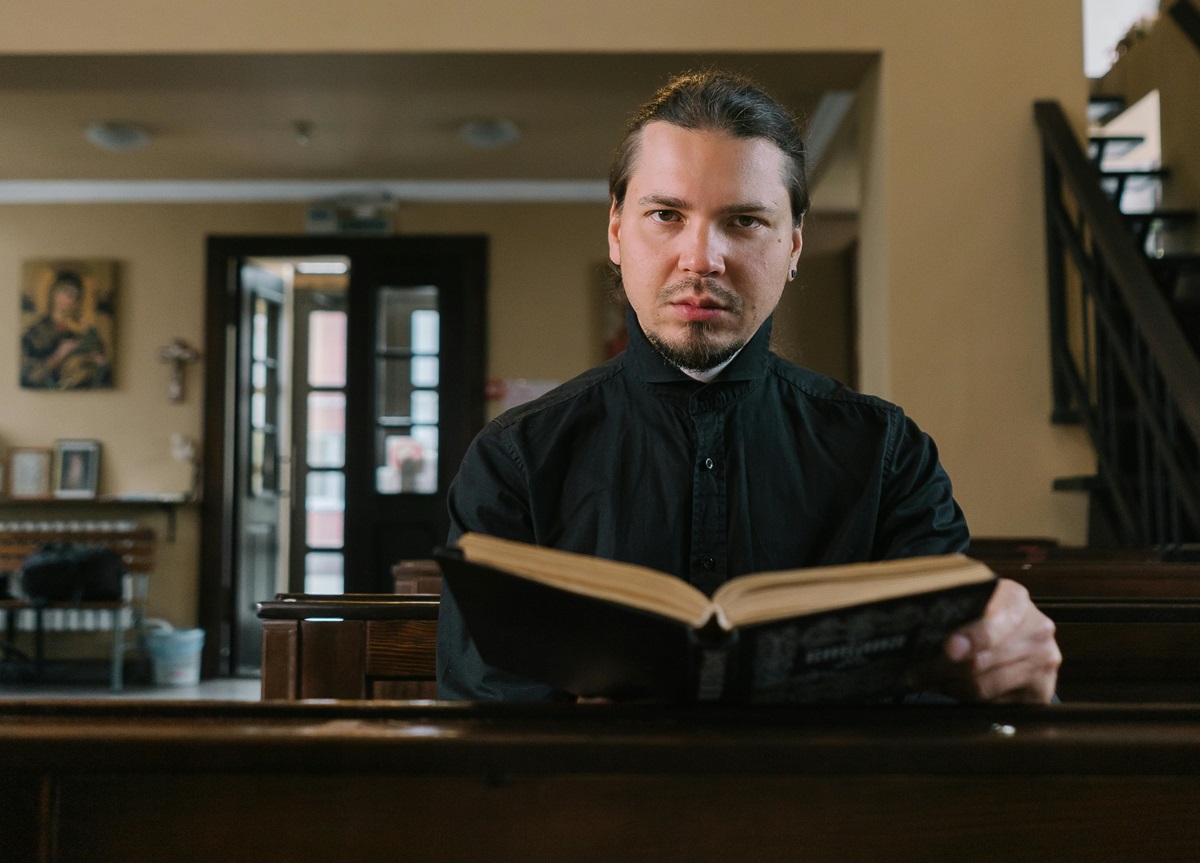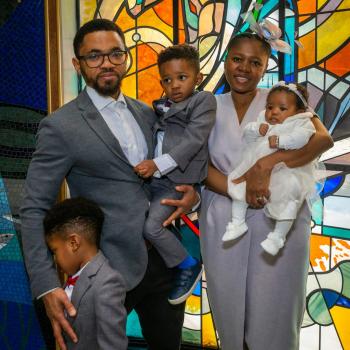In “Racism in the Pews: A Pastor’s Confession of Compromise,” I bared my shame. Here’s how compromise can lead to conviction and action.

Do you remember the longstanding tradition of “testimony night” in Evangelical churches? In the absence of a sermon, church members would get up and tell their own stories of God’s goodness. At testimony night, we heard tales of miracles, of broken relationships restored, and of blessings.
But the ones that always moved us the most were the confessions. A believer stood up and said, “This is how I’ve failed, but this is also where I’ve learned, where God has given grace, and where I can do better.” I think its time that we had testimony night. I’ve gotten the ball rolling with my confession.
My last article was difficult to write. I hope you’ll open this link and read it if you haven’t already. What I have to say next hinges on your understanding of my horrible mistake, and my desire to move forward.
The Chasm of Segregation
In his book, The Color of Compromise: The Truth about the American Church’s Complicity in Racism, author Jemar Tisby writes about a chasm of segregation between White people and people of color:
[Martin Luther King Jr.’s “I Have a Dream” speech] was August 28, 1963. More than fifty years later, how far has the American church come in terms of race relations? The “Whites Only” and “No Negros Allowed” signs have been taken down, but schools remain segregated. People of color are incarcerated at disproportionally high rates. Black unemployment remains double that of whites. Most poignantly, churches remain largely segregated. The reluctance to reckon with racism has led to a chasm between black and white Christians in theology, politics, and culture. This chasm only makes it harder to productively communicate and take effective action around racial issues. (Pg. 192)
I was still struggling with this chasm when, a few months after the incident of my last article, another opportunity emerged for the church and me to do the right thing. When that new situation arose, I had to decide whether I would repeat my mistake or begin to rebuild the bridge.
“We Don’t Rent…to Their Kind.”
I received a phone call from a bride-to-be who said she was looking for a church building to rent, for their upcoming ceremony. She explained to me that she was a member of a local congregation, but their facility was too small to manage the crowd she expected. “We’ve always driven by your church building and thought how pretty it was, and we’re wondering if it’s available.” I told her that I didn’t make those decisions but had a committee that handled bookings of our facilities. I’d talk with the committee and have them give her a call. I did just that, and once I had passed the job on to the committee chair, I thought nothing else of it.
Some time later, the committee chair called me back, her voice quavering anxiously. “Did you know that the couple is Black?”
I was glad that she couldn’t see me rolling my eyes through the telephone, but I don’t think I disguised my feelings as telegraphed through my own voice. “Well, first of all, you can’t see what a person looks like through the telephone, so no, I didn’t know that they were Black. But second, so what if they are Black? Why does that make a difference? This is, after all, the twenty-first century.”
That ruffled her. “I…well, I… you don’t understand,” she said. “We don’t rent our building to their kind. The committee is going to tell them no.”
A Convenient Excuse
That pissed me off. I knew very well that we did not have a discrimination policy, and that it was only the intent of the committee, or only the chair of the committee, to keep people of color out of our building. So, I told her the church at large must decide this. (Baptist churches vote on everything!)
By the time our church business meeting came up, word had spread throughout the congregation. One of the things on the agenda would be a decision as to whether or not we would allow this particular couple to rent our building. People came with their proverbial guns loaded for bear. However, as we began to look into the date the couple had requested the use of our building, we discovered that the church already had a major event planned for that entire weekend. So, the membership decided that we would contact the couple and say that we were sorry, it was nothing personal, but the building simply wasn’t available for their wedding. It was an all too convenient excuse.
Non-Discrimination Resolution
That pacified a few people, but it just made me even more angry. I had come to the meeting prepared to settle this matter for the last time. Instead, the missed opportunity to decide for inclusion seemed like one more nail in the church’s racist coffin. So, at our next business meeting after that, I came to the church with a well-drafted non-discrimination resolution that I wanted the church to pass. After reading the resolution and allowing time for discussion, I asked for the vote to be taken by show of hands. And, to my surprise, the resolution passed with only a few dissenting votes. What a cause for celebration!
In The Color of Compromise, Tisby writes:
In the Bible, James 4:17 says, “If anyone, then, knows the good they ought to do and doesn’t do it, it is sin for them”…The church today must practice the good that ought to be done. To look at this history and then refuse to act only perpetuates racist patterns. It is time for the church to stand against racism and compromise no longer (Pg 212).
Not “Publicly Racist”
I was proud that my church had known the good that needed to be done, and then had the courage to act on its convictions. I was delighted with the decision that I framed the non-discrimination policy. Then, I nailed it to the wall in the sanctuary, in a spot where every passerby would see it. It was only later that I learned that not everybody who had voted for the policy actually agreed with it. When asked why they had supported it, one grumbler stated, “The vote was by show of hands—I wasn’t going to be publicly racist.”
And isn’t that just the thing? The church doesn’t want to be publicly racist. That’s why the deacon took me aside in private to say I shouldn’t preach at the Black church. It’s why everyone felt relieved when our building just happened to be unavailable for the wedding. Why the few African Americans who have entered White churches in the South have done so with a sense of dread—not because of what’s said to their face, but behind their backs.
In my experience, overt, malicious racism in the church is rare. But silent racism still thrives. But I have wondered why the church nominated do-nothing parishioners to be deacons, when our one Black member, already ordained a deacon at another Baptist church, never got a mention. I have had to explain why it’s offensive when farmers refer to the migrant workers they employ as “Our Mexicans,” (especially when some were from Honduras). And I have heard the loud silent gasps of the congregation when a person of color ascended the pulpit to preach in my place.
Anti-Racism
Racism has been a pernicious thorn in the flesh of the Southern, White, evangelical church for a long time. I confess that when I was younger, I compromised my own beliefs to keep the peace. I didn’t realize at the time that it’s not enough to be non-racist. Only an anti-racist stance from church leadership can break the cycle of overt hatred and violence, as well as covert undercuts and bigotry. Ephesians 2:13-15 says:
But now in Christ Jesus you who once were far off have been brought near by the blood of Christ. For he is our peace; in his flesh he has made both into one and has broken down the dividing wall, that is, the hostility between us, abolishing the law with its commandments and ordinances, that he might create in himself one new humanity in place of the two, thus making peace…
White Christians, if we believe that’s true, then it’s not enough to defend our perceived non-racism by proclaiming that we have Black friends. It’s not enough that we try to be fair and equitable by declaring that “all lives matter,” rather than singling out the significant pain of one particular group. Instead, we’ve got to come to terms with the systemic racism present in our society and in our churches. We’ve got to have courage enough to face our own racism, because it’s there, whether we like it or not. We’ve got to educate ourselves, and gain perspectives we’ve never had before (Jemar Tisby’s book is a good start). And we’ve got to become proactive rather than reactive.
How is This Not Virtue-Signaling?
As I conclude this article, I must ask myself an important question: How is this not virtue signaling? Virtue signaling is calling attention to your position to make you look better. I hope that, if you read my last article, you don’t think it makes me look better. On the contrary, it makes me look pretty damn weak. Instead of virtue signaling, I hope that this article is virtue challenging. In the spirit of amends and reparations, I call attention to my failure in the hopes that we can all learn to do better. Maybe one day, when we’re all doing better, we won’t need articles like this.
For related reading, check out my other articles:
- Pastors: If Your Deconstruction Gets You Crucified, There’s Hope of Resurrection
- Who Helped Jesus Carry the Cross?
- Stop Dehumanizing And Demonizing Your Enemies!














